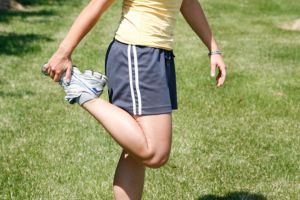Whether you're hitting the pavement to clear your mind, train for a race, or just enjoy the fresh air, running is one of the best ways to stay fit and feel great. But let’s be real—it can also lead to some bumps, bruises, and other unexpected surprises. To keep you on track and injury-free, here are eight first aid tips every runner should have in their back pocket.

1. Sprained Ankle: Stay Strong and Stable
Prevention: Strengthen your ankle muscles and practice balance exercises. Wearing proper running shoes with good support can make a significant difference. You may need to search for the best running shoes for your exercise, such as stability running shoes or road running shoes.
Treatment: Follow the RICE method (Rest, Immobilize, Cool, and Elevation). Rest the ankle, immobilize, apply ice, wrap it with a compression bandage, and elevate it to reduce swelling. Seek medical attention if the sprain is severe. Learn more about first aid treatment for sprains or strains.
2. Dehydration: Stay Hydrated, Stay Healthy
Prevention: Hydration is key! Drink plenty of water before, during, and after your run. Monitor your urine colour as a hydration check—pale yellow is what you’re aiming for.
Treatment: If you start feeling dizzy or lightheaded, it’s time to rehydrate. Sip water or an electrolyte drink and find a cool, shaded spot to rest. Severe dehydration might mean you need medical attention, so don’t push through it.
Don't forget to visit our heat-related emergencies tips page if you're out running on hot days. It's important to stay safe!
3. Knee Pain (Runner’s Knee): Keep Your Knees in Check
Prevention: Keep those knees happy by strengthening your quadriceps, hamstrings, and hip muscles. Pay attention to your running form and don’t overdo it.
Treatment: Rest your knees and apply ice to reduce inflammation. Consider using a knee brace for added support. To prevent this from happening again, stretch and strengthen the muscles around your knee. If the pain doesn’t go away, it’s time to see a healthcare professional.

4. Build Your Endurance Gradually: Slow and Steady Wins the Race
Start Slow: Don’t rush into it! Gradually increase your mileage by no more than 10 per cent each week to avoid injuries - this is the best running tip.
Long Runs: If possible, incorporate one long run into your routine each week. This not only builds endurance, but also conditions your body for long-distance running challenges.

5. Muscle Cramps: Stay Loose and Limber
Prevention: Hydrate, warm up, and keep your diet balanced with enough electrolytes.
Treatment: If a cramp hits, stop running. Gently stretch and massage the muscle and apply heat if the pain lingers. Rehydrate with water or an electrolyte solution to prevent further cramping.

6. Pace Yourself: Run Smart, Finish Strong
Run at a Conversational Pace: For endurance runs, maintain a pace where you can comfortably chat. This helps you conserve energy and prevents early burnout in your every day running.
Negative Splits: Try running the second half of your run slightly faster than the first. This technique, known as negative splits, can boost your overall performance and help you finish with energy to spare.
7. Listen to Your Body: Rest, Recover, Repeat
Rest and Recovery: Don’t underestimate the power of rest days. They’re crucial for recovery and preventing overtraining injuries. If you’re feeling unusually tired or in pain, take an extra rest day.
Running everyday sounds exciting, but you must listen to your body when it's asking for rest. Most importantly if you are preparing for running a race or start running.
Adjust as Needed: If your body is telling you to slow down or modify your routine, listen. It’s better to take it easy for a day than risk a long-term injury.
8. Blisters: Treat Your Feet Right
Prevention: Blisters can be a runner’s worst enemy. Wear well-fitted shoes and moisture-wicking socks. Consider applying blister prevention tape or moleskin to potential trouble spots before you head out.
Treatment: If you do get a blister, keep it clean and covered with a bandage or blister pad. If it’s painful and needs draining, use a sterilized needle, but leave the skin intact as a natural barrier.
Stay Safe on the Run with First Aid Training
Knowing how to handle running injuries is essential, but being trained in first aid can prepare you for so much more. Whether you’re out for a jog or just going about your day, first aid knowledge can be a lifesaver. Ready to learn more? Register for a first aid course today.Don't forget to download the free Red Cross First Aid app for quick access to life-saving tips and instructions.

